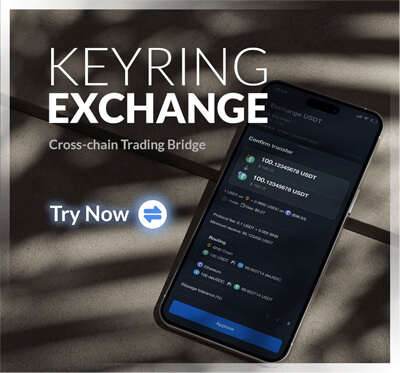Ethereum Triple Halving: What Investors Should Know

Nikhil Shamapant – the man behind the concept of Triple Halving – once believed that “a reduced supply would tend to have the effect of boosting prices.”
He also believes that Ethereum may stand to benefit even more from the Triple Halving than Bitcoin does through its 4-year cycles.
However, no one really has any idea how it will play out amid the current bear market – which has already had a disproportionate impact on crypto.
While the cryptocurrency community is waiting for an event that has long been promised and delayed, another important development has taken place in the Ethereum network: The Merge.

One key issue related to the Merge is Ethereum Triple Halving – which is likely to have a big impact on the crypto’s future.
So what exactly is Ethereum Triple Halving? How does it work?
Let’s learn about it in our article.
What is Ethereum Triple Halving?
Ethereum Triple Halving is a unique process that involves a significant reduction in the block reward from 3 ETH to 1 ETH.
You may have heard about Bitcoin Halving if you’ve been around crypto for a while.
Similar to the way Bitcoin Halving occurs every four years to reduce the network’s inflation rate, Ethereum Triple Halving places deflationary pressure on Ethereum.
In this case, the term is used to describe three factors:
- Reduced ETH issuance under Proof-of-Stake consensus
- ETH burning via the EIP-1559 upgrade
- ETH staking lowers the amount of ETH that is effectively in circulation
Related Reading: Cedro Finance: New Era in DeFi Space
How Does Ethereum Triple Halving Work?
The process of Ethereum Triple Halving consists of three main procedures:
The migration to Proof-of-Stake Has Led to a Reduced Issuance
As far as we’ve known, the migration of Ethereum from Proof-of-Work to Proof-of-Stake has led to a significant impact on Ethereum’s supply.
Specifically, Ethereum has to issue much fewer ETH to reward stakers than the amount it has to issue to reward miners.
In accordance with PoW requiring large computation power, miners are incentivized to do this by being provided high block rewards.
Meanwhile, with the move to PoS, the network no longer needs miners but validators, and staking requires much less energy and is cheaper to start with.
Therefore, the network’s ETH annual and daily issuance will drop drastically.
According to a tweet from blockchain engineer Montana Wong,
“Annual issuance of ETH will drop from 4.3% pre-merge to an estimated 0.4% post-merge.”
Moreover, it is expected to decrease the daily sell pressure on ETH by 10x.
EIP-1559 and Transaction Fees Burning
The updated EIP-1559 was implemented during the London Hark Fork in 2021. That, as a result, proposed an introduction of a potential deflation mechanism.
*EIP-1559 stands for Ethereum Improvement Proposal – an upgrade that happened on August 5, 2021, to change how Ethereum calculates and processes network transaction fees.
This mechanism involves burning a portion of transaction fees under certain conditions.
That will generally help a lot more in reducing the inflation rate.

Staked Ethereum Withdrawals
ETH staking is the third factor that involves in the Ethereum Triple Halving.
The Proof-of-Stake mechanism relies on the individuals staking their ETH on validators.
Even before the Merge, individuals have had chances to participate in staking and get rewards.
However, this procedure has recently turned out a bit less relevant due to many times of upgrades in between.
Keep in mind that the ability to withdraw ETH hasn’t actually translated into the withdrawals of staked ETH.
Furthermore, most ETH stakers are happy to stake their assets and passively earn yield on their holdings.
The more upgrades the Ethereum’s staking system have, the larger the number of investors are willing to stake their coins.
Despite the ability to stake ETH as an incentive against selling, ETH staking is positively contributing to the network’s long-term growth.
Related Reading: Exploring the Potential: Use Cases of ERC-6551 Token-Bound Accounts
When is the Ethereum Triple Halving Happening?
Unlike Bitcoin Halving which was happening every four years, Ethereum Triple Halving doesn’t have a specific date.
But we can say that the process has already happened so long as the Ethereum protocol is changed in a relevant way.
Related Reading: Big Brand NFTs Are Unleashing the Future of Web 3 Art World
Bottom Lines
In conclusion, the Ethereum Triple Halving will see a significant cut-down in supply, imposing ETH even scarcer on the market.
This is relatively reminiscent of the implementation of the MEV-Burn Proposal, in which scarcity is expected to drive up the price.
Of course, Ethereum Triple Halving makes Ethereum a more attractive asset to hold over the long term and is one of the factors to determine whether this cryptocurrency will ultimately gain widespread adoption in the future.
Whatever approach you choose to take towards this looming moment in crypto, remember that it’s essential to store your crypto securely and seamlessly in a wallet like KEYRING PRO.



